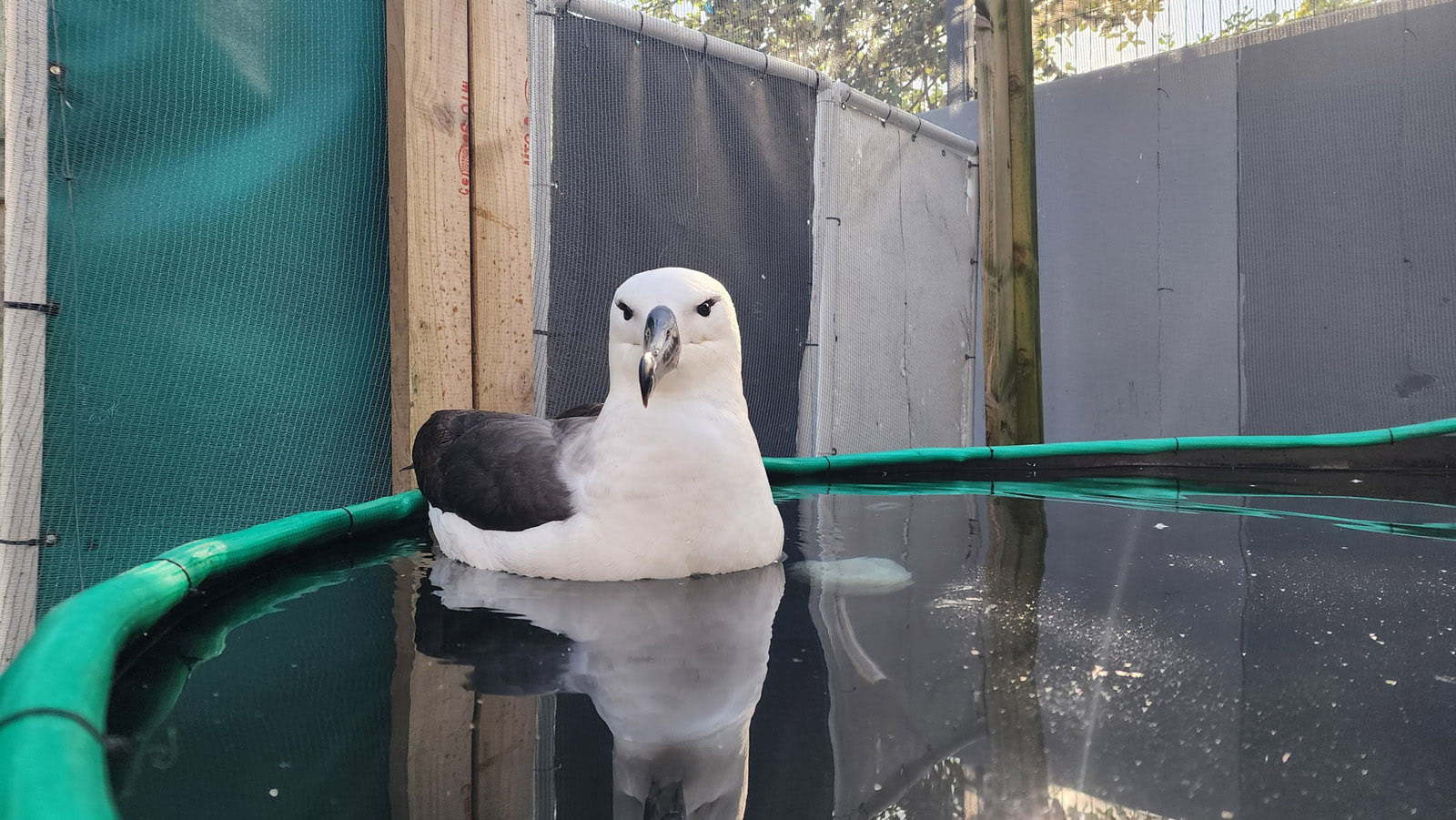
The rescued juvenile Black-browed Albatross gains strength in SANCCOB’s pool, photograph by David Roberts
Andrea Angel, Albatross Task Force Manager in South Africa, writes in the November 2024 issue of BirdLife South Africa’s online newsletter.
“Having spent close to 20 years working for the protection of albatrosses and petrels, I am elated every time I see them at sea and mourn each one I collect dead from a fishing vessel.
Yet it is thanks to the Albatross Task Force’s (ATF’s) work with the fishers and to the relationships we’ve built up over the years that Markus, a fisher, could call me to help him with a live albatross that had been brought in by one of the vessels. It was fortunate that the vessel docked in Cape Town, where help was on hand.
The juvenile Black-browed Albatross [Thalassarche melanophris], its bill still mostly black, was not ringed so we couldn’t tell where it came from, but we know from tracking records that most of them come all the way from South Georgia [Islas Georgias del Sur*]. One bird was recorded as having flown more than 4500 km across the Atlantic in just four days!
The Southern African Foundation for the Conservation of Coastal Birds (SANCCOB) took the bird in and informed us that although it was wet, dehydrated and tired, it had no life-threatening injuries. It was X-rayed to check for any internal injuries or lodged hooks, re-hydrated and brought back to strength in SANCCOB’s large pool. A few days later, and with the help of a recreational fishing vessel, it was released back into the ocean where it quickly found its bearings and flew off.

Released safely back to the ocean with the help of a recreational fisher, photograph by Fernando de Sousa
Juvenile Black-browed Albatrosses come to forage in our waters during their first 3–4 years, before they start their annual trips to a breeding colony to court a mate. Yet only when they are between eight and13 years of age do they breed for the first time! As host to these amazing birds, South Africa needs to ensure that none are killed in our waters, because every time an adult albatross dies, a chick on its home island dies with it. And it can take the lone mate years to find another partner.
Despite evidence of how much work we still need to do, I am confident that the ATF is preventing thousands of albatrosses like this young Black-browed from getting killed when interacting with our fisheries. To me, albatrosses embody freedom, wisdom and untamed wildness. They rule the skies over the open oceans and remote islands, and I feel privileged to be part of keeping them safe.”
22 November 2024
*A dispute exists between the Governments of Argentina and the United Kingdom of Great Britain and Northern Ireland concerning sovereignty over the Falkland Islands (Islas Malvinas), South Georgia and the South Sandwich Islands (Islas Georgias del Sur y Islas Sandwich del Sur) and the surrounding maritime areas.

 English
English  Français
Français  Español
Español